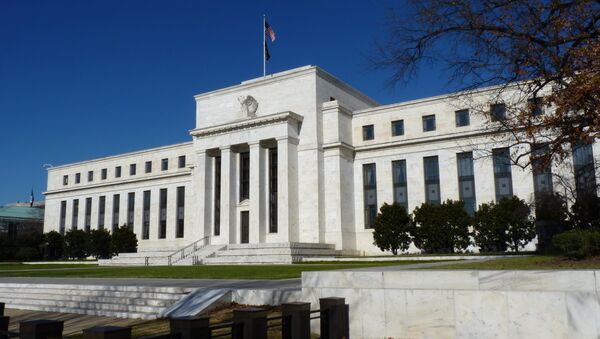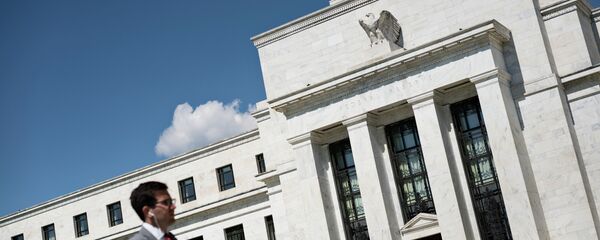Kristian Rouz – The US Federal Reserve’s Wednesday decision to leave base interest rates unchanged snapped the winning streak for the greenback, while pushing Treasuries higher – a paradoxical combination, as typically, the dollar’s FX rate and the performance of US sovereign debt rise and fall in tandem. Stock market investors were confused by the Fed’s announcement, resulting in a mixed bag of stock performance across the major sectors.
The yield on US 30-year Treasury bonds dropped by 0.07 percent (the bond value rose, essentially) after the Fed's announcement, the dollar slid, oil extended losses, and gold rallied. In other words, assets demonstrated divergent dynamics within their own categories (safe haven and commodity) — an anomalous occurrence in the open market. That partially happened due to the contradictory nature of the Fed’s announcement: having voiced some optimism, the regulator at the same time hinted that a long-anticipated hike is unlikely to happen anytime soon.
“There’s not enough here to suggest that the Fed is any closer to raising interest rates,” Anthony Valeri of San Diego-based LPL Financial said. “It allows the Fed to keep their options open.”
Meanwhile, the enormous fiscal stimulus resulted in the US government’s debt reaching $19 trln compared to $10 trln in 2008 and $12 trln in 2009.
The total value of all types of US bonds now tops $40 trln; for comparison's sake, the total global GDP for 2015 is estimated by the World Bank as having been $73.4 trln. Given investors’ rife demand for these assets, a lot of investment capital never reaches Main Street, as economic growth is stuck around an annualized 2 percent.
“When you throw some disappointing earnings reports and some nervousness about interest rates together, you see the market catch a bit of a down draft like today,” says Terry Morris of Wyomissing, PA-based National Penn Investors Trust Co.
The bond market is jittery after the policy announcement, with the curve between 2-year and 30-year yields flattening, potentially indicating a wrong policy decision – the flatter the curve, the closer the economy is to recession, as suggested by the implied effects on financing discrepancies.
"Best to trade long USD against the USD-bloc, our favorite being long USD/CAD. Also EUR/USD and GBP/USD [are expected] to weaken – USD/JPY might be a bit mixed until Friday. The market is likely to continue its long-USD bias into NFP (which is still a week away), but given the trend in jobless claims, it’s hard not to have 'some' positive expectations for next Friday," Richard Cochinos of CitiFX said.




